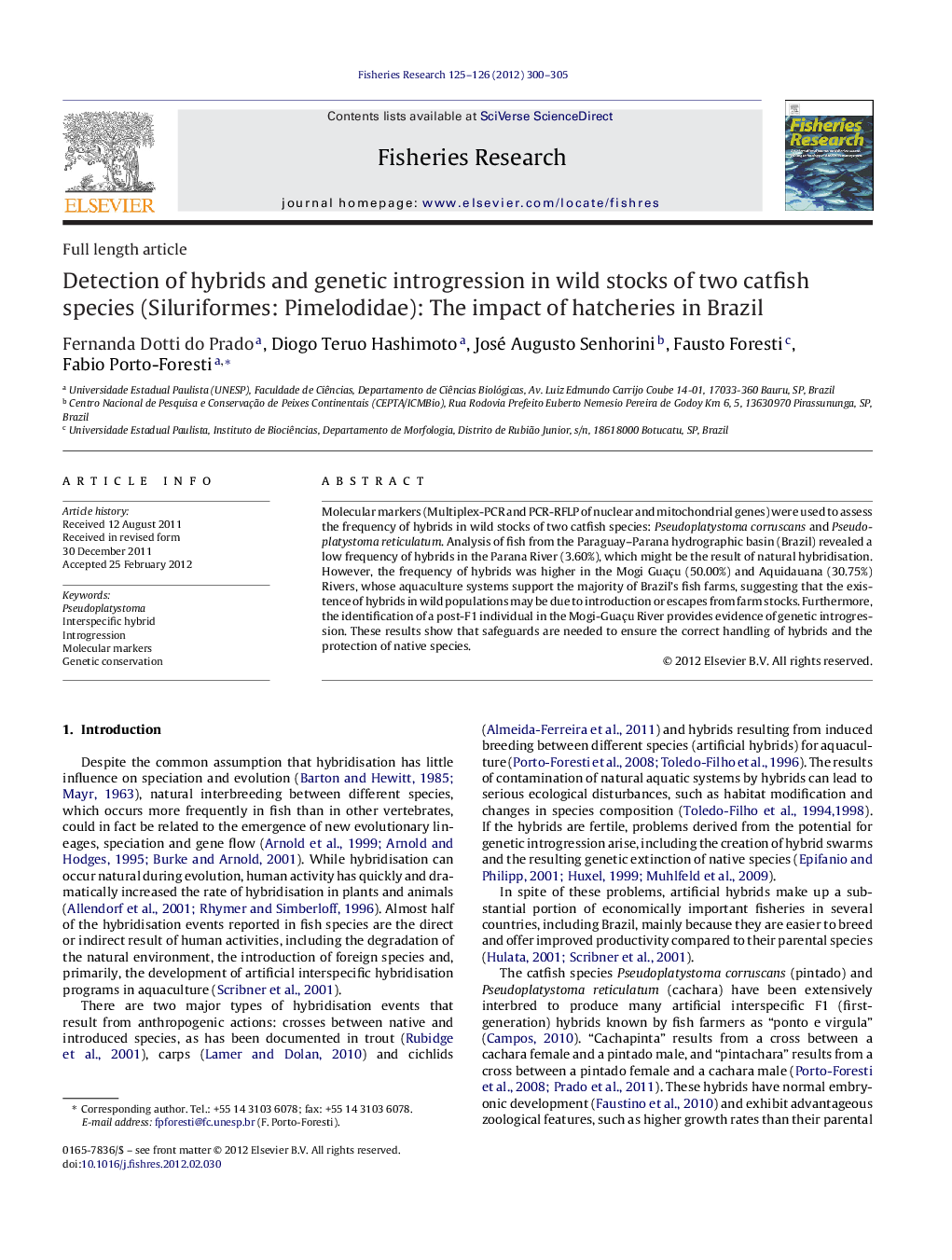| Article ID | Journal | Published Year | Pages | File Type |
|---|---|---|---|---|
| 4543437 | Fisheries Research | 2012 | 6 Pages |
Molecular markers (Multiplex-PCR and PCR-RFLP of nuclear and mitochondrial genes) were used to assess the frequency of hybrids in wild stocks of two catfish species: Pseudoplatystoma corruscans and Pseudoplatystoma reticulatum. Analysis of fish from the Paraguay–Parana hydrographic basin (Brazil) revealed a low frequency of hybrids in the Parana River (3.60%), which might be the result of natural hybridisation. However, the frequency of hybrids was higher in the Mogi Guaçu (50.00%) and Aquidauana (30.75%) Rivers, whose aquaculture systems support the majority of Brazil's fish farms, suggesting that the existence of hybrids in wild populations may be due to introduction or escapes from farm stocks. Furthermore, the identification of a post-F1 individual in the Mogi-Guaçu River provides evidence of genetic introgression. These results show that safeguards are needed to ensure the correct handling of hybrids and the protection of native species.
► We assess the frequency of Pseudoplatystoma catfish hybrids in Brazilian rivers. ► We used both nuclear and mitochondrial molecular markers. ► Interspecific hybrids were observed at six of the eight studied localities. ► Genetic introgression evidences were verified at one locality. ► This contamination is probably due to the introduction or escapes from farmed stocks.
